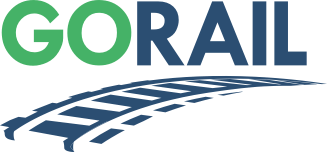Washington, D.C. — On World Environment Day, GoRail convened over 100 attendees—from local, county, and state leaders to freight rail and environmental experts—for a timely webinar on how freight rail is helping companies cut emissions and contribute to a cleaner, more sustainable economy.
“Rail represents less than 1% of U.S. greenhouse gas emissions, but we’re not content to rest on our laurels,” said Mike Swaney, Director of Advanced Energy Innovation at BNSF Railway.
This spirit of innovation and improvement was one of the central themes from the expert panel, which offered insight into the ways railroads, shippers, and technology developers are tackling one of the transportation sector’s biggest challenges: decarbonizing supply chains without compromising efficiency or economic viability.
Theresa Romanosky, Associate General Counsel at the Association of American Railroads, opened the discussion with an industry overview, outlining the broad range of sustainable technologies being explored and deployed by Class I railroads. Biodiesel and renewable diesel, for example, will play critical roles in decarbonization as 95% of the overall rail carbon footprint is associated with locomotive fuel emissions.
She also noted that all major U.S. freight railroads are implementing solutions approved by the Science Based Targets initiative (SBTi).
But getting to the next level of emissions reduction requires a thoughtful approach to technology adoption. U.S. freight railroads are experimenting with everything from battery-electric locomotives to hydrogen propulsion systems—each with its own pros and cons, Romanosky noted. Battery-electric locomotives, for example, may work in yard or short-haul contexts but face range and charging challenges at scale.
Swaney offered real-world context for these challenges in his discussion of BNSF’s battery-electric locomotive pilot in Southern California in 2021. The locomotive, manufactured by Wabtec Corporation, achieved a 12% fuel reduction across 12,800 miles. Still, Swaney noted, the locomotive’s 2.4MWh battery capacity is a far cry from the 70-80 MWh hours of usable energy on a diesel locomotive today.
One of the biggest outcomes from that experiment, he noted, was that it helped the railroad develop a rationale and framework for evaluating new technology. “How do we wrap our arms around something that we have no experience with—when it comes to operations and maintenance?” posed Swaney.
Swaney also detailed BNSF’s sustainability framework and carbon commitment, which is a 30% reduction in carbon emissions by 2030. So far, the railroad is tracking ahead of its goal, powered by fuel efficiency measures as well as yard improvements like electric cranes and other equipment.
Curtis Sloan of Watco underscored that smaller railroads—which haul about one-third of the freight moving on the nationwide rail network and make 5% of total industry revenue—must approach sustainability in different ways, and at a different scale, than the Class Is. Watco, for example, has reduced its fuel emissions by adopting idle-reduction technologies, even working with the American Lung Association to apply for funding through the Diesel Emissions Reduction Act to add these systems to more than 50 locomotives.
“A second kind of, you know, ‘whiz bang’ project is battery-electric switchers,” said Sloan, describing how the railroad utilized funding from the state of Texas to build and deploy two battery-electric locomotives at their yard in Houston.
Two years into the service, Sloan says the new switchers are working well for their yard use case—plus they’re quieter, offer crews more power and acceleration, have reduced maintenance by 30%, and offer fuel savings. Sloan says that Watco plans to build off this success by applying for funding for similar projects through the federal CRISI grant program.
“Where we’re at today, there’s a lot of technology on the table,” described William Carnegie, Senior Product Manager for Engine and Fuel Cell at Wabtec Corporation, a leading provider of technology, equipment, and services for railroads. He outlined Wabtec’s locomotive technology roadmap, from Tier 4 locomotives and biofuels to alternative power sources like batteries and digital solutions. Trip Optimizer alone saves over 500 million gallons of diesel fuel annually, Carnegie said.
Andrew Okuyiga, Vice President of Public Affairs at UPS, spoke to how rail is embedded in the company’s emissions strategy, including its aim to be carbon neutral by 2050. As the biggest intermodal rail customer in the country, UPS moves volume across 80 U.S. intermodal terminals, including on more than 500 trains in a normal week. During peak season, noted Okuyiga, UPS uses the equivalent of 47 miles of trains each day.
“Over the past decade, we’ve avoided millions of metric tons of greenhouse gas emissions through our partnership,” said Okuyiga. “It’s a really good solution that reduces our emissions, reduces our cost, allows us to meet our customer promise—and the better that service is with our rail partners, the more we’re able to shift from other modes to rail, which we really like to do.”
The session closed with a brief policy discussion prompted by a question from GoRail President Russ McGurk: “In the current regulatory and policy environment, are we seeing initiatives that would be helpful at maximizing progress toward sustainability—or potentially going the other way and hindering?”
Sloan stressed the importance of regulatory consistency. “When there are dramatic changes one way or the other, it becomes hard to plan for the deployment of technology. It becomes hard to plan what your capital needs will look like for the deployment of that technology.”
Swaney echoed the point. “We would advocate for a regulatory framework that I would call, politically enduring. Because when we purchase locomotives, that’s a 40- to 50-year investment, and we need to have the certainty that we’ll be able to operate that locomotive over the course of its lifetime,” he said.
Together, their remarks highlighted the opportunities of the moment: railroads are uniquely positioned to lead on climate—but they’ll need stable policy, flexible funding tools, and shared public-private commitment to fully realize their potential.


